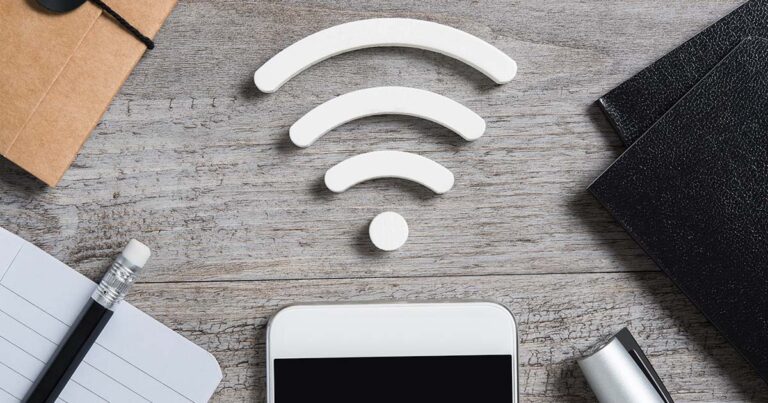With so much unused data as part of a lot of people’s monthly data caps, wireless hotspotting is a way to put some of that gathering-dust data to use.
Everything you need to know about wireless hotspotting
According to the ACCC’s Communications Market Report 2020–2021, Australian mobile users are buying more data than they’re using. At the time of the report, the average SIM Only/Postpaid user only went through 11.8GB of data a month compared to the 35GB median data allowance. For Prepaid users, it was 6.3GB per month compared to a 30GB median data allowance.
That’s a lot of spare gigabytes going to waste. Thankfully, wireless hotspotting is a great way to put those extra gigabytes of potentially expiring data to use.

What is a mobile hotspot?
Using your Android phone or iPhone as a mobile hotspot lets you share the data from your mobile plan with other devices. Most modern phones support hotspotting. Activating the hotspot feature effectively turns your phone into a mobile WiFi modem, with its own network name (SSID) and password.
Mobile hotspotting vs tethering
How to activate a mobile hotspot
There may be slight differences between specific phone models and operating systems, but here are the general steps for activating hotspotting and turning your phone into a mobile WiFi device.
Activate mobile hotspot on iPhone
Follow these general steps to activate WiFi hotspot on an iPhone:
- Go to Settings.
- Select the ‘Personal Hotspot’ option.
- Enable the ‘Allow Others to Join’ option.
- Enter a preferred password for the hotspot.
Activate mobile hotspot on Android
Follow these general steps to activate WiFi hotspot on an Android phone:
- Go to Settings.
- Select the ‘Network and Internet’ option.
- Tap on ‘Hotspot and tethering’.
- Select ‘WiFi hotspot’, then turn it on.
- Optionally, change the name and password for your hotspot, then save the changes.
Choosing a hotspot password
How to connect to a mobile hotspot
Connecting to a mobile hotspot is as straightforward as connecting to any WiFi network. Simply bring up your WiFi networks and tap on the name that matches the hotspot on your mobile phone. Punch in the correct password, wait a few seconds for the WiFi connection to authenticate, and then you’re ready to use the internet on any WiFi device you like.
Mobile hotspot speeds
You shouldn’t expect mobile speeds to be as reliable as those you’ll find when connected to an NBN plan at home. Mobile speeds are determined by a variety of factors, including the network you’re using (Telstra, Optus or Vodafone), the signal reception, mobile tower congestion, and how many devices are connected to your mobile hotspot.
Mobile 4G internet, for instance, can technically reach speeds of 100Mbps download and 50Mbps upload, but you’re unlikely to see those speeds during practical everyday scenarios. Similarly, those in an area with 5G coverage (using a 5G-compatible handset on a 5G plan) can theoretically reach speeds of 1000Mbps download and 100Mbps upload, but that’s also unlikely in practical settings.
If you’re curious about speeds, it’s best to run a WiFi speed test initially, as long as you don’t mind using a bit of data to run the test, and you’ll see what kind of download and upload speeds you’re working with. While max-speed 5G is recommended for five or more users and max-speed 4G is best for three or four people, those counts drop the slower the speeds. For example, 50Mbps download speeds are best for three or four people, but 25Mbps is only recommended for a couple of users.
Mobile hotspot data-saving tips
The biggest challenge with a mobile hotspot is ensuring you don’t inadvertently blitz through your data, particularly if you’re on a Prepaid plan or a SIM Only plan that doesn’t throttle speeds once you reach your data cap (though slow speeds aren’t ideal, either). The easiest way to get around this is to set data alerts on your phone or activate data-saver features to help keep data usage low.
If you’re using a mobile hotspot to browse the web with a bit of instant messaging and maybe some music streaming thrown in, you shouldn’t expect to use a whole lot of data per hour. That said, watching lots of videos or using streaming services like Netflix or Kayo can make those gigabytes disappear incredibly fast. For video streaming, check for options that let you lower the quality to save data if you don’t have enough monthly mobile data for better quality.
This logic also applies to anyone else you share your hotspot password with, as anyone connected to your mobile phone is pulling from the same speed and data pool.
Mobile 4G internet, for instance, can technically reach speeds of 100Mbps download and 50Mbps upload, but you’re unlikely to see those speeds during practical everyday scenarios. Similarly, those in an area with 5G coverage (using a 5G-compatible handset on a 5G plan) can theoretically reach speeds of 1000Mbps download and 100Mbps upload, but that’s also unlikely in practical settings.
If you’re curious about speeds, it’s best to run a WiFi speed test initially, as long as you don’t mind using a bit of data to run the test, and you’ll see what kind of download and upload speeds you’re working with. While max-speed 5G is recommended for five or more users and max-speed 4G is best for three or four people, those counts drop the slower the speeds. For example, 50Mbps download speeds are best for three or four people, but 25Mbps is only recommended for a couple of users.
Related Articles




